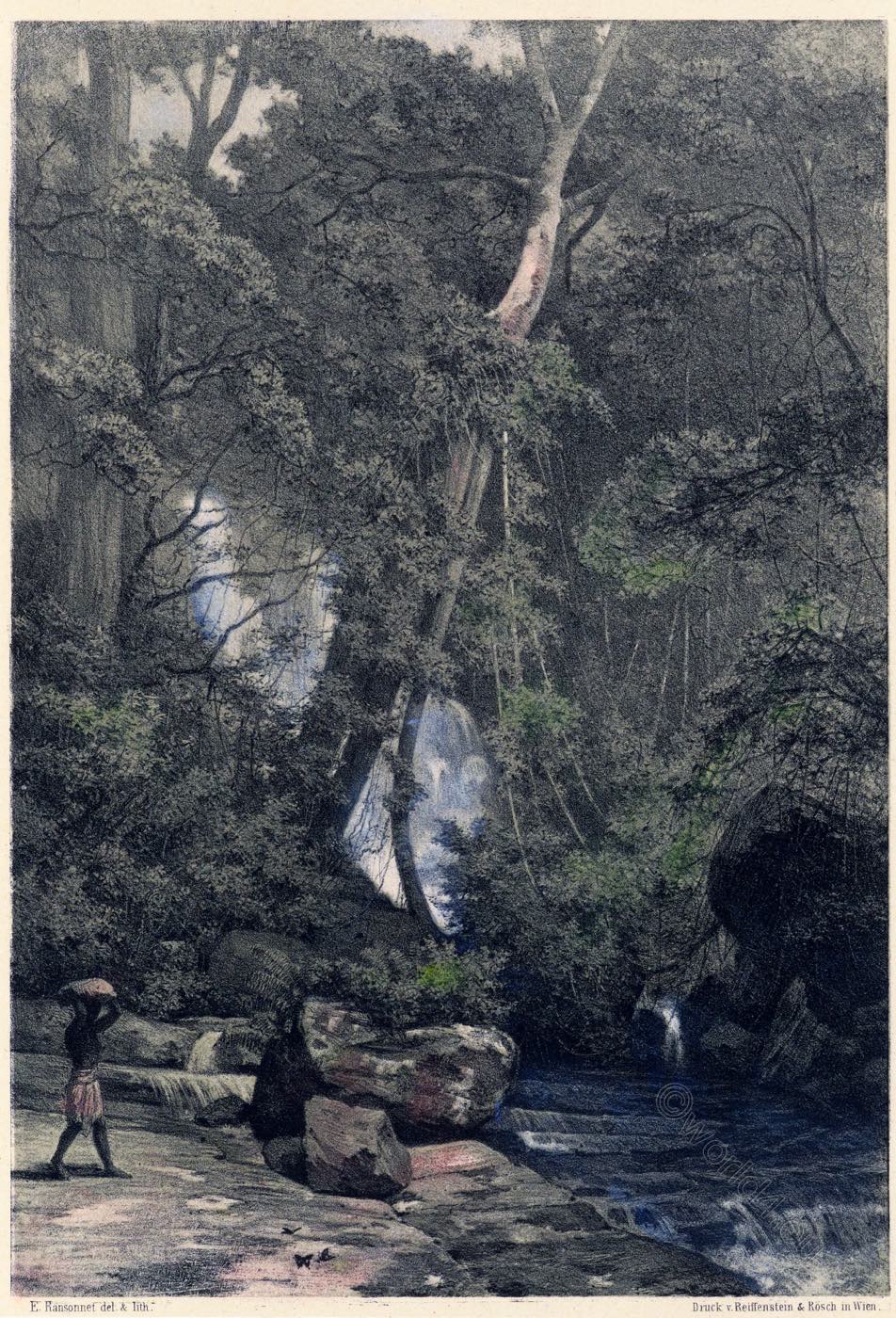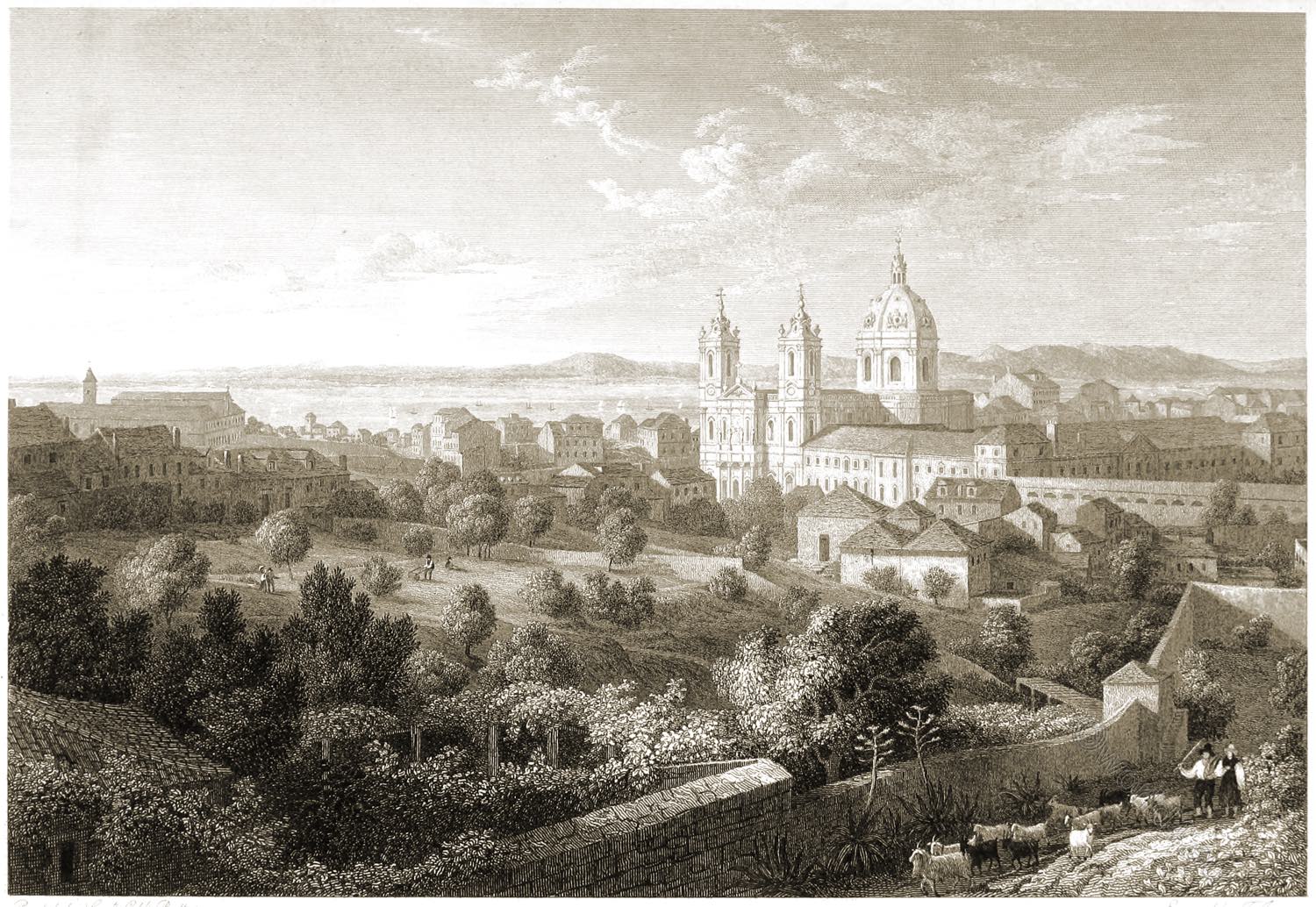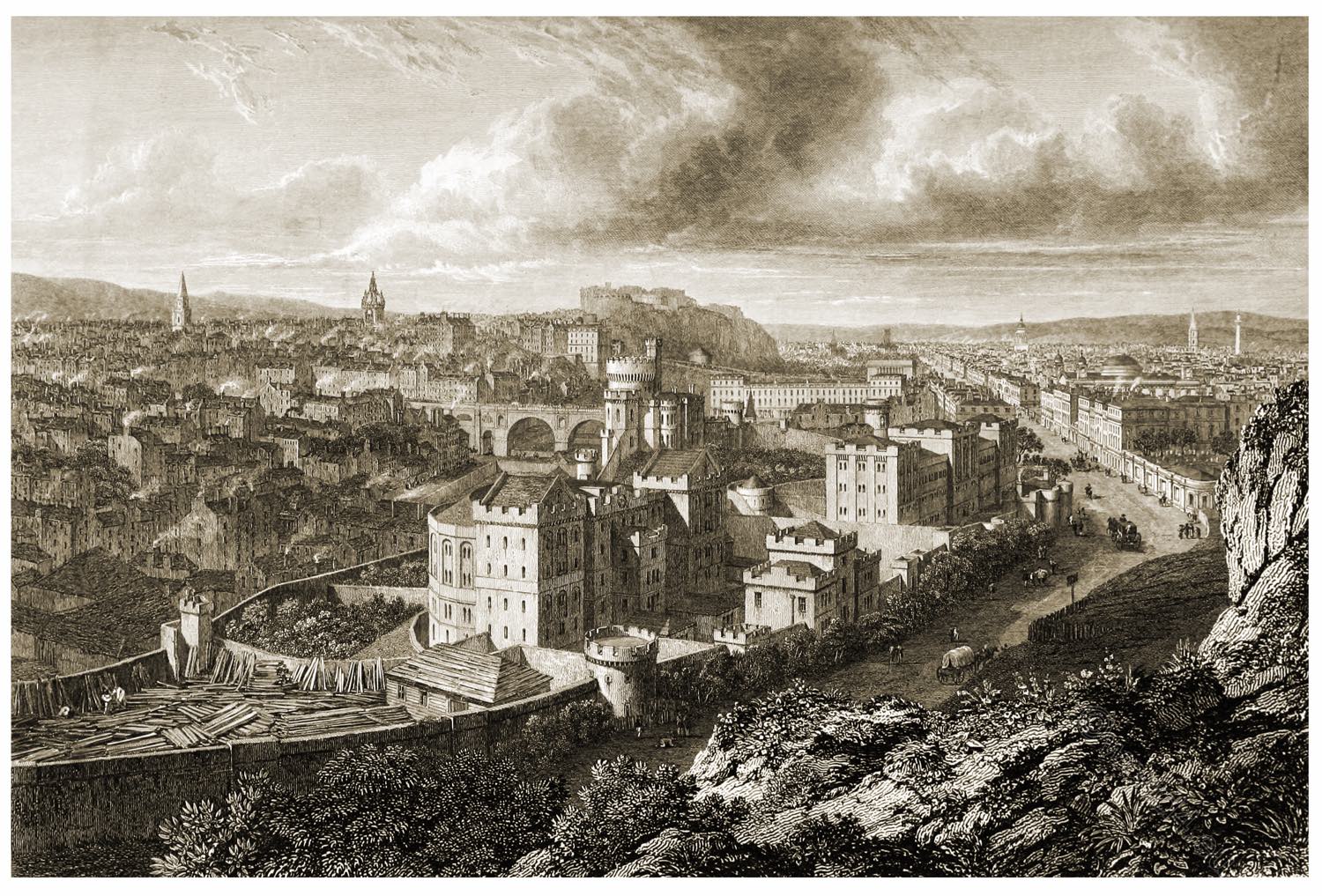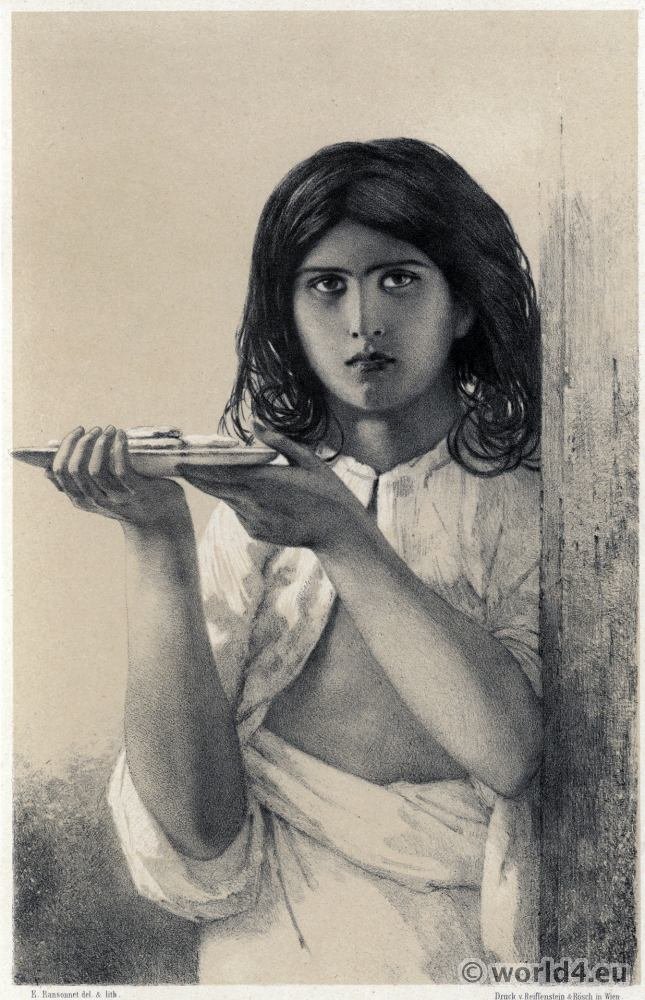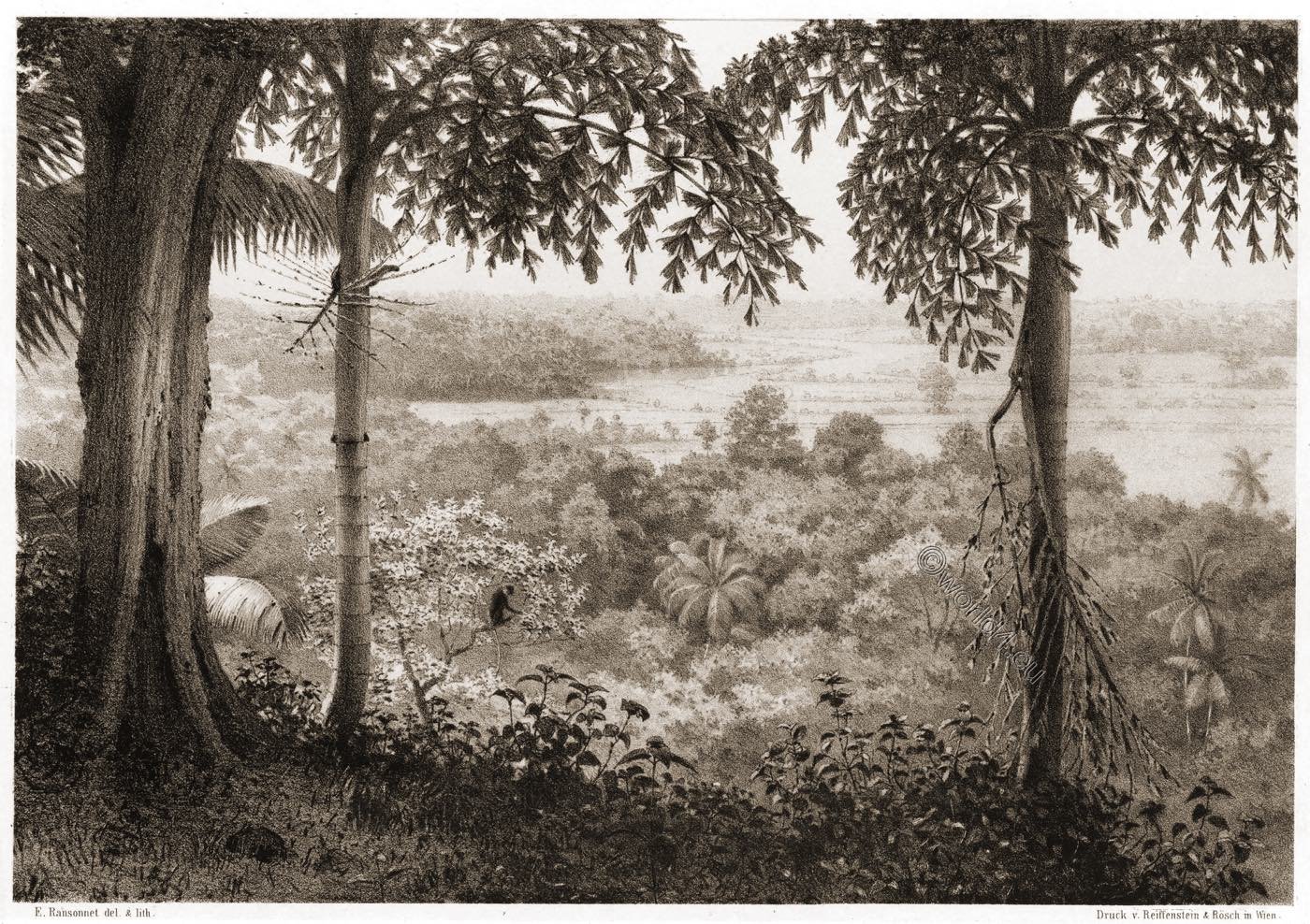
View taken from Wackwelle Hill.
The first trip of the newcomer in Ceylon is generally made towards Wackwelle-hill (Gongala Mountain range), a few miles from Galle. The country displayed before the eye at the summit is highly picturesque and as every-where in the cultivated part of the island, has the appearance of a beautiful park. Wack-welle-river (Gin Ganga) is seen winding through verdant paddy fields intercepted by beautiful masses of shady trees of every hue and shape, above which lofty coco-nut palms are towering.
These lovely groves are tenanted by great numbers of the black monkey of the plain (Semnopithecus leucoprymnus,) called Kaloo Wanderoo by the natives. These creatures are seldom disturbed here, and are wont to watch the rambling visitors to the place, from one of their favourite trees.
In the foreground of the picture are standing two specimens of the singular sugar palm (Caryota urens), the Kitool of the natives. This useful tree yields an enormous amount of delicious saccharine sap , which is transformed by boiling into a kind of brown sugar (jaggery). The ground below the two palms is thickly covered with a pretty shrub, the Lantana mixta, which was introduced some forty years ago by Sir Hudson Lowe from the Mauritius and has propagated so rapidly in the island, as to become finally even a nuisance to the cultivators.
Source: Sketches of the inhabitants, animal life and vegetation in the lowlands and high mountains of Ceylon. As well as of the submarine scenery near the coast taken from a diving bell by the Baron Eugène de Ransonnet (1838 -1926). Printed for the author by Gerold & sold by Robert Hardwicke, London 1867.

